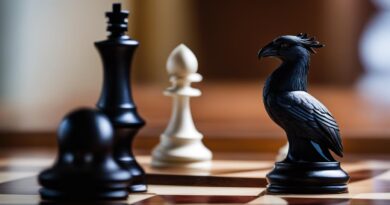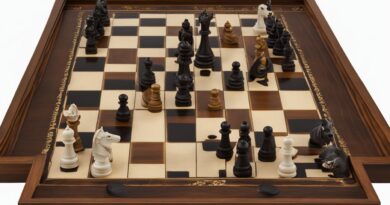Chess Clock Rules
Chess clocks are essential for the world of chess. They add urgency and strategy to the game. They make sure each player has their own time interval. This keeps the game fair, and adds suspense.
Players must think quickly and make decisions in a short time frame. This creates dynamic, thrilling matches.
The chess clock also enforces rules when it comes to turn-taking. Player must press their side after each move to start their opponent’s timer. This creates a back-and-forth rhythm.
Interestingly, the concept of chess clocks was first introduced in 1883 by Thomas Bright Wilson. It was meant to regulate games played between distant locations. Now, they are used by both professionals and enthusiasts.
Understanding Chess Clocks
Chess clocks are a must-have for competitive chess matches. They have two separate timers, one for each player, which start and stop independently, making sure the game is fair and the pace is maintained.
Plus, they come with extra features like time increment or delay, to give players extra thinking time or preventing delays. It’s important to know how to use these functions to manage time properly.
In some tournaments, there’s a limited amount of total playing time instead of individual times per move. This adds a thrilling element, as players must strategize their moves and time management.
Ultimately, understanding chess clocks is essential for serious chess players. By efficiently using their allocated time and adapting to tournament rules, players can become better decision makers and outsmart their opponents.
Basic Chess Clock Rules
Chess clocks are a must for fair play and game integrity. Here are five points to keep in mind:
- Timing: Each player is given a set amount of time to complete their moves. The clock starts with the first move, and the time decreases as moves are made.
- Pressing the Clock: Players should move their piece and press the clock with the same hand. This prevents unfair advantages or delays.
- Pause and Resume: Players can pause or stop the clock when necessary, such as for discussions with the arbiter or resolving an issue on the board.
- Illegal Moves: If an illegal move is made, the opponent can claim victory by stopping the clock and informing the arbiter.
- Running Out of Time: If a player’s time runs out before completing their moves, they lose instantly, regardless of the board position.
Also, Thomas Bright Wilson introduced chess clocks in 1883. This revolutionized competitive chess by ensuring fairness and adding strategic time management.
Strategies for Time Management
Time management is important for chess. You need to plan and make decisions quickly. Here are some strategies to help:
- Plan ahead. Analyze what could happen. Think of your opponent’s moves. This helps you save time.
- Focus on key moves. These are the ones that can decide the match. Spend more time on them to make sure they’re accurate.
- Avoid distractions. Focus on what you planned to do. Put your energy into executing your strategies.
- Manage your opponent’s clock. Know how much time they have left. Use tactics to make them spend more time.
To be even better, pay attention to details like common openings and tactical motifs. Also, play faster games to improve your speed and adaptability.
Now put these strategies into practice. If you use them, you’ll have an edge over your opponents. Dedicate yourself to them. They’re the key to success in chess! Use them and enjoy creative, disciplined play.
Advanced Chess Clock Rules
Chess clocks have various rules that can affect gameplay. Delay adds extra time after pressing the button, Time Increment rewards players with extra time for moves, and Bonus Time gives a reward for quick moves. There’s also Byo-yomi, which provides extra periods of time once the main time runs out.
Some clocks even offer different modes such as Countdown Mode and Tournament Mode, to adapt to specific gaming scenarios.
The history of chess clocks is interesting. It began with simple analog timers and progressed to electronic clocks with adjustable settings in the 20th century. This showcases how technology has improved the world of competitive chess!
Practice Tips for Using Chess Clocks
Using a chess clock can make your play much better! Here are some tips to help you get the hang of it:
- Understand the different buttons and functions of the clock beforehand. That way, you won’t be confused during your game.
- Have a plan for timing your moves – both offensive and defensive.
- Start with short time limits while practicing. Then, gradually increase them as you become more comfortable.
- Practice in real-game conditions. Play against people of a similar skill level and use the same time controls.
- After each game, assess how you did. Note any mistakes and missed opportunities.
These practice tips will help you master your chess clock usage. Don’t forget – practice makes perfect!
Be sure to read up on the rules of any tournaments you enter. This will ensure fair play and avoid any misunderstandings.
To illustrate this point, let me tell you about Alex. He was nervous when he first used a chess clock in a tournament. He rushed his moves, making bad decisions and losing time. But Alex kept practicing and honing his skills. Over time, he became an expert player with great strategic thinking and composure under pressure.
With dedication and practice, you too can get the hang of chess clocks and excel in competitive chess matches.
Conclusion
Chess is a game of precision and skill. The chess clock adds an extra dimension, as players must not only consider their moves but their time management too. Rules keep play fair – players must stick to a set time allocation for each move. Speed chess is even more fast-paced, with shorter time limits.
The World Chess Federation (FIDE) has a rule that if a player’s flag falls but their opponent can’t deliver checkmate, it’s a draw. This ensures victory is based on skill, not technicalities.

